What is Global Supply Chain Management?
Global Supply Chain Management is the lifeline of modern businesses, ensuring goods and services reach customers seamlessly across borders. Imagine a world where a single disruption in the supply chain could halt production lines, delay deliveries, or inflate costs. This interconnected network demands precise coordination, innovative solutions, and resilience to thrive in today’s dynamic environment.
Let’s dive into the core aspects of Global Supply Chain Management, exploring its benefits, challenges, and strategies to optimize performance in a competitive global market.
What is Global Supply Chain?
A global supply chain connects suppliers, manufacturers, and distributors across different countries. It includes sourcing raw materials, producing goods, and delivering them to customers. The objective is to balance cost-efficiency, quality, and speed by leveraging resources and capabilities worldwide.
For example, a smartphone manufacturer might source raw materials from Africa, assemble components in Asia, and sell finished products in Europe and North America. Each step requires coordination to meet demand and minimize delays, which can be further streamlined through effective supply chain mapping.
Key components of a global supply chain include:
- Procurement: Identifying and acquiring raw materials.
- Production: Manufacturing goods at optimal locations.
- Logistics: Transporting products efficiently across regions.
- Distribution: Ensuring timely delivery to customers.
What is Global Supply Chain Management?
Global Supply Chain Management focuses on optimizing the processes within a global supply chain. It aligns operations, ensures compliance with international standards, and handles challenges like shipping delays, currency fluctuations, and geopolitical risks. Companies use tools like real-time visibility platforms and predictive analytics to achieve seamless operations.
A well-managed supply chain reduces costs, improves delivery times, and enhances customer satisfaction. For instance, automated shipment tracking solutions streamline tracking for complex global operations.
Benefits of Global Supply Chain Management
Global Supply Chain Management offers significant advantages for businesses operating across borders. These benefits include:
1. Enhanced Efficiency
Streamlining operations reduces costs and minimizes waste. Effective coordination between procurement, production, and distribution ensures timely delivery and optimized resource use. Leveraging automated tools minimizes manual errors, boosting efficiency further.
2. Improved Resilience
A robust supply chain is better prepared to handle disruptions such as natural disasters, geopolitical tensions, or pandemics. Strategies like supplier diversification and contingency planning mitigate risks and ensure continuity. Resilience frameworks are integral for navigating supply chain disruptions effectively.
3. Sustainability
Global Supply Chain Management promotes eco-friendly practices. Companies can reduce their carbon footprint by optimizing transportation routes, using sustainable materials, and adhering to environmental regulations. Employing green logistics aligns businesses with consumer expectations for sustainability.
4. Broader Market Access
Operating on a global scale allows businesses to tap into new markets, expand their customer base, and drive revenue growth. It also facilitates partnerships with international suppliers and distributors, emphasizing the importance of supply chain visibility for seamless operations.
5. Customer Satisfaction
Meeting delivery timelines and ensuring product quality enhance customer trust and loyalty. Advanced tracking systems and reliable logistics contribute to positive customer experiences, as exemplified by companies prioritizing real-time shipment updates.
6. Innovation and Collaboration
Working with global partners fosters innovation. Businesses gain access to diverse ideas, advanced technologies, and best practices, driving continuous improvement in processes and products. Collaboration platforms enable better communication and alignment among stakeholders.
7. Cost Optimization
Global supply chains enable companies to source materials and labor from cost-effective regions. This strategic sourcing improves profit margins without compromising quality.
Why Global Supply Chain Management is Important?
Global Supply Chain Management plays a vital role in ensuring businesses remain competitive and sustainable. Here are the key reasons why it is essential:
1. Cost Optimization
Sourcing materials from regions with lower production costs enables businesses to maximize profitability. Strategic partnerships with international suppliers also help negotiate better pricing and reduce overheads, which are vital in cost management strategies.
2. Market Expansion
Managing a global supply chain allows companies to enter new markets and cater to diverse customer needs. By reaching international audiences, businesses can scale operations and increase revenue streams.
3. Innovation Opportunities
Collaboration across countries fosters innovation by exposing businesses to diverse technologies, ideas, and expertise. This enables organizations to enhance product quality and streamline operations using predictive analytics.
4. Risk Management
A well-planned supply chain mitigates risks like geopolitical instability, natural disasters, or sudden supply shortages. Businesses can build resilience through diversification and contingency planning.
5. Sustainability Goals
Global Supply Chain Management promotes sustainable practices, such as optimizing logistics to reduce carbon emissions, using eco-friendly materials, and adhering to environmental regulations. These actions improve brand reputation and align with global sustainability demands.
6. Operational Efficiency
By integrating advanced technologies like IoT and blockchain, businesses can achieve higher efficiency, reduce waste, and ensure timely deliveries.
Challenges of Global Supply Chain Management
Managing a global supply chain presents several challenges that require strategic approaches to overcome. These include:
1. Disruptions and Delays:
Global supply chains are highly interconnected and thus prone to disruptions from various sources, such as natural disasters, geopolitical tensions, or global pandemics. For example, the COVID-19 pandemic caused significant delays due to port closures, labor shortages, and disrupted shipping schedules.
2. Regulatory Compliance:
Operating across borders involves navigating a web of complex regulations, including customs laws, trade agreements, and local industry standards. Staying compliant requires continuous monitoring and expertise in international trade policies.
3. Cultural and Language Barriers:
Global operations involve collaborating with partners and stakeholders from diverse cultural and linguistic backgrounds. Miscommunication or misunderstandings can lead to inefficiencies, delays, or strained relationships. Cross-functional training programs address these gaps effectively.
4. Sustainability Pressures:
As consumer demand for eco-friendly products grows, companies face pressure to adopt sustainable practices. Initiatives such as circular supply chains and green logistics align with environmental goals while improving efficiency.
5. Technological Gaps:
While technology plays a critical role in modern supply chains, not all regions have equal access to advanced tools or infrastructure. This can result in inefficiencies or bottlenecks in certain areas.
Case Study
Revamping Shipment Tracking for a 134-Year-Old Print Company with GoComet
Kodak, a global leader in printing, film, and chemicals, operates across multiple regions, including the US, Europe, and Asia. Managing shipments for a company with such extensive global reach posed several challenges.
Challenges:
- Manual tracking of shipments led to inefficiencies and high operational costs.
- Lack of real-time shipment visibility affected productivity and collaboration.
- Difficulty analyzing carrier performance and mitigating risks like port congestion.
Solutions with GoComet:
- Automated Shipment Tracking: Real-time visibility across over 2,500 shipments annually.
- Actionable Insights: AI-powered analytics optimized shipping lanes and carrier performance.
- Improved Collaboration: Real-time updates enhanced cross-departmental communication.
Results:
- Reduced manual tracking efforts by 80%, saving hundreds of hours monthly.
- Identified cost-effective shipping routes, leading to significant savings.
- Proactively managed shipment uncertainties, ensuring seamless logistics operations.
Conclusion
Global Supply Chain Management is the backbone of international business operations, ensuring efficiency, cost savings, and customer satisfaction. By leveraging advanced tools like automation, real-time tracking, and predictive analytics, businesses can enhance their supply chains to remain competitive. Adopting sustainable practices and building resilience against disruptions further ensures operational continuity in an unpredictable global landscape.
FAQs
1. What is Global Supply Chain Management?
Global Supply Chain Management refers to managing and coordinating supply chain activities across international borders to optimize efficiency, reduce costs, and meet customer demands.
2. How does technology enhance supply chain management?
Technology like IoT, blockchain, and AI provides real-time visibility, predictive insights, and automation, streamlining processes and reducing inefficiencies.
3. What are the common challenges in managing global supply chains?
Key challenges include disruptions and delays, regulatory compliance, cultural differences, sustainability pressures, and technological gaps.
4. Why is sustainability important in global supply chain management?
Sustainability helps reduce environmental impact, align with consumer expectations, and improve brand reputation while often lowering costs through efficient practices.
5. How can companies build resilient global supply chains?
Resilience can be achieved through supplier diversification, real-time tracking, predictive analytics, and strategic contingency planning.
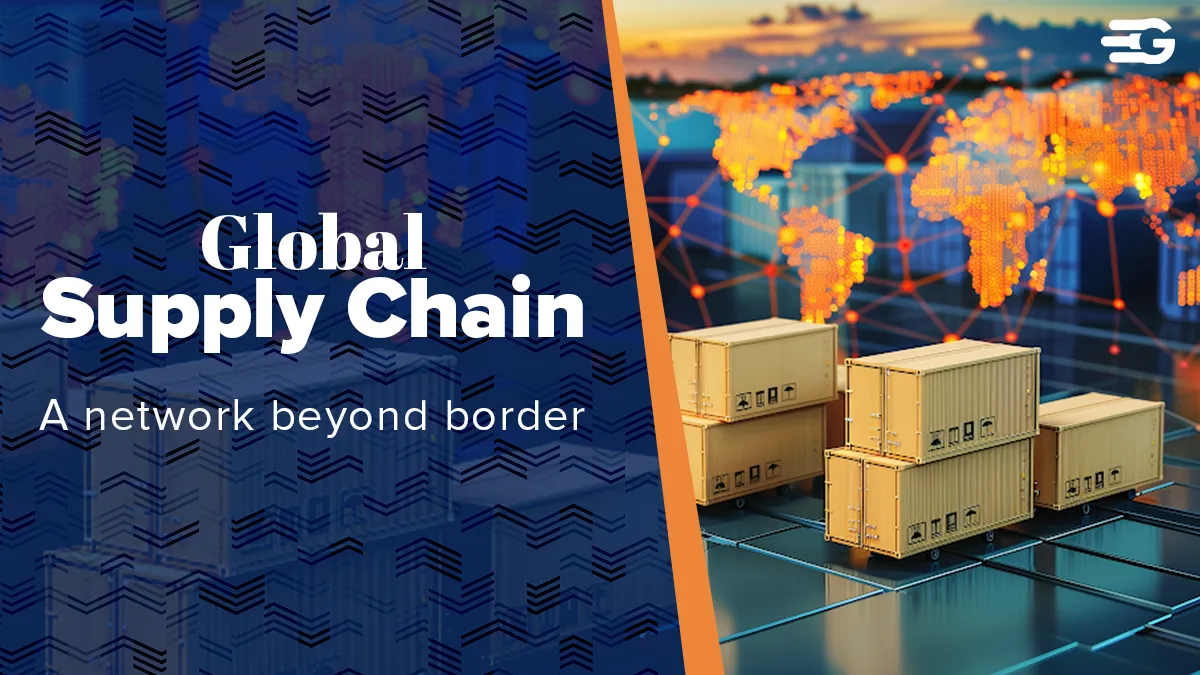
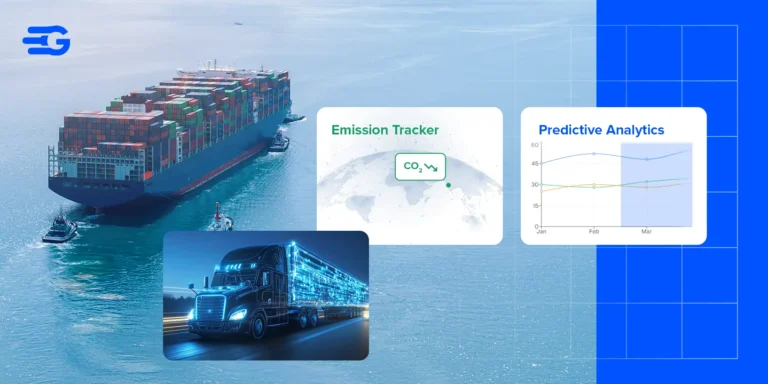
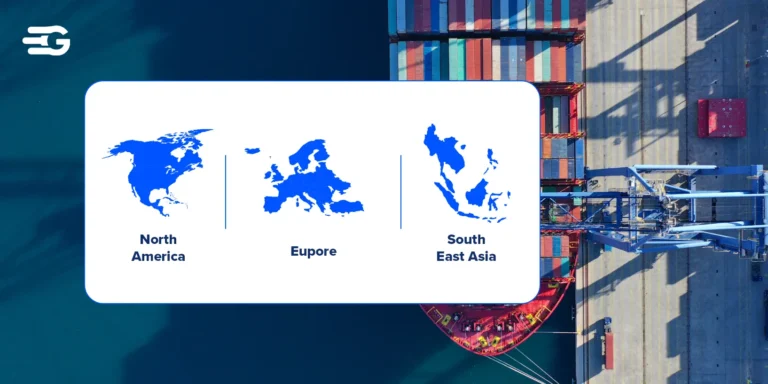

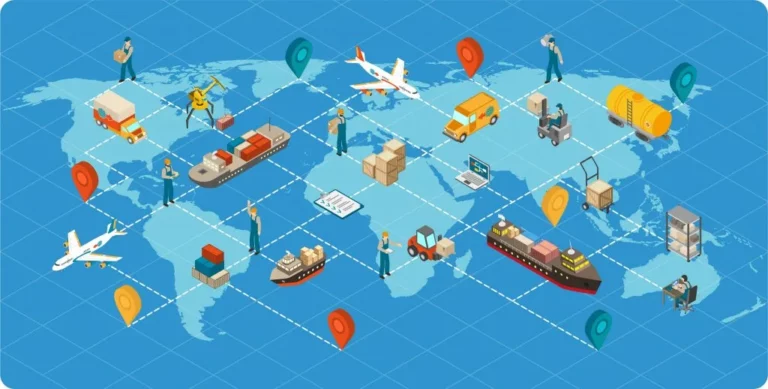
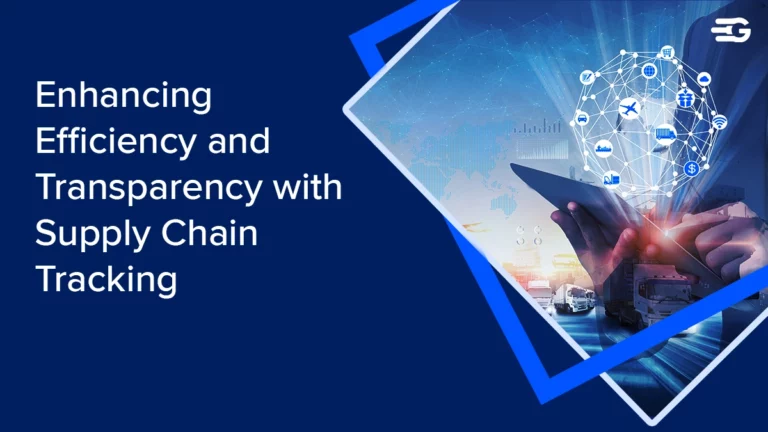
![Trump’s Second-Term Tariff Impact: The 2018 Deja Vu [UPDATED] 7 Trump’s Second-Term Tariff Impact: The 2018 Deja Vu [UPDATED]](https://www.gocomet.com/blog/wp-content/uploads/2024/11/Trumps-Second-Term-The-2018-Deja-Vu-1-768x384.webp)